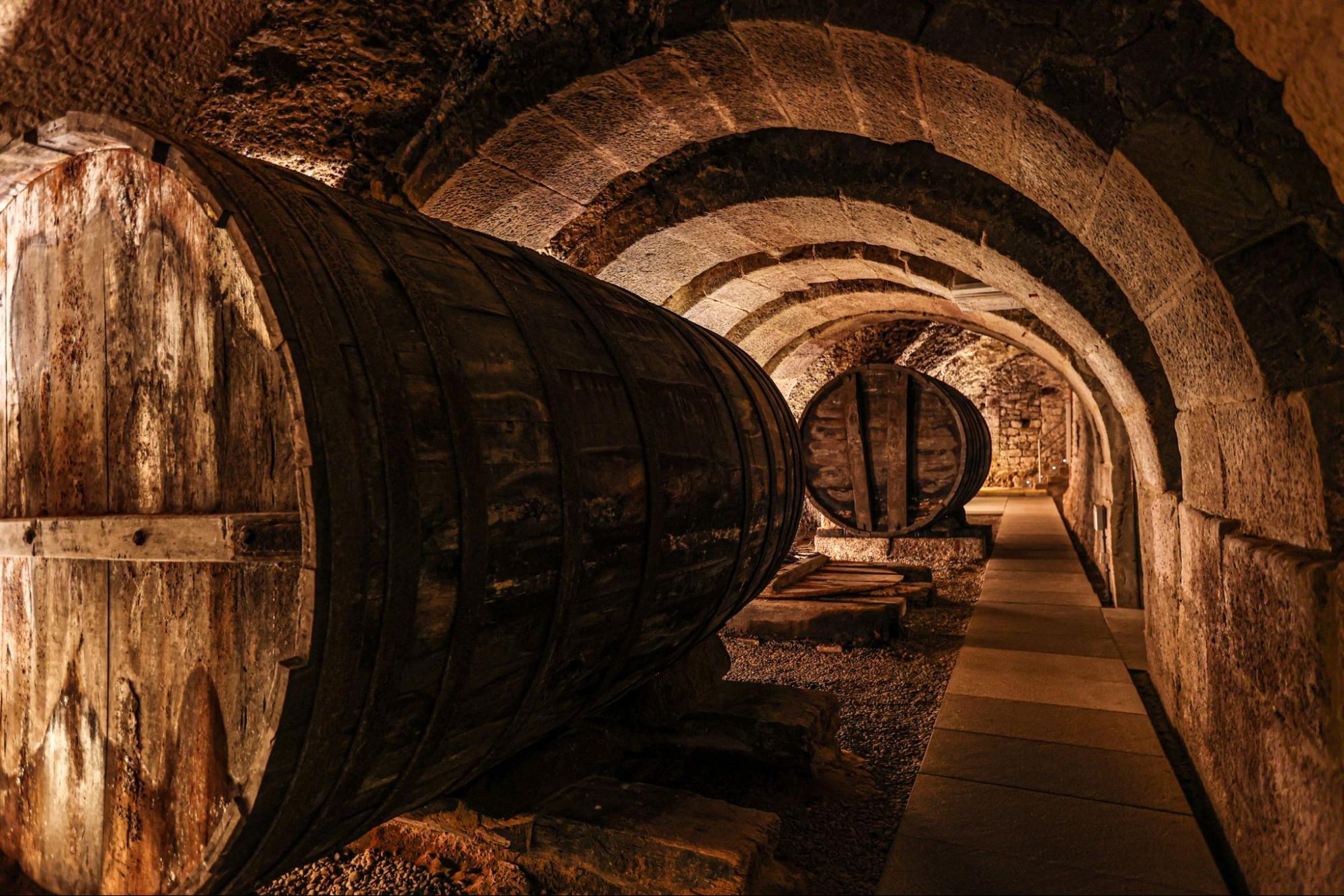- Wine Color/Type
- Top Occasions
- Unique Wines
- Surprise Me!
A Journey Through Time: The Fascinating History of Wine
Grapes, Fermentation, and the Evolution of Wine
Historical underground cave in Laguardia, in the Rioja region, where wine was being fermented, aged and stored (Photo by Mario La Pergola on Unsplash)
From Ancient Civilizations to Modern Times
The history of wine is a captivating journey that dates back nearly 8,000 years. It was in the Neolithic period (around 6000 BC) that people started to grow grapes, which led to the discovery of wine. Wine became a staple in the diet of ancient civilizations, including the Egyptians, Greeks, and Romans, who all held the beverage in high regard.
The Romans, in particular, were instrumental in spreading viticulture across their vast empire. They not only introduced new grape varieties but also improved wine-making techniques.
Fast forward to the Middle Ages, and wine continued to be a crucial part of daily life, often safer to drink than water. The Church played a significant role in maintaining vineyards and producing wine during this period.
Today, wine is enjoyed worldwide, with countries like France, Italy, Spain, and the United States leading in global production.
The Influence of Wine on Culture and Society
Wine has always been more than just a beverage; it's a symbol of celebration, a catalyst for conversation, and a mark of status.
In ancient Greece, wine was a central part of symposiums, gatherings where intellectuals would discuss philosophy and politics. Meanwhile, the Romans viewed wine as a 'democratic' drink, accessible to all social classes.
In the Middle Ages, wine became a symbol of hospitality and was often given as a gift.
In recent times, wine tasting and collecting have become hobbies for enthusiasts, and the art of pairing wine with food has turned dining into a gastronomic experience. The influence of wine on culture and society is undeniable and continues to evolve.
Notable Milestones in Wine History
The history of wine is marked by several notable milestones. Here are three examples. One of the earliest known references to wine is from a Sumerian poem honoring the goddess Ninkasi, which dates back to around 1800 BC and includes a recipe for a wine-like beverage.
Fast forward to the 17th century, and we see the birth of Champagne, the famous sparkling wine from the Champagne region of France. Dom Pierre Pérignon, a Benedictine monk, is often credited with its invention, though the exact details remain disputed.
Finally, in the 19th century, the wine industry faced one of its biggest challenges: the Phylloxera epidemic. This tiny insect devastated European vineyards, leading to a crisis in the wine industry. However, the crisis also led to significant advancements in viticulture, including the practice of grafting European vines onto resistant American rootstock.
These milestones not only demonstrate how wine has evolved over time but also highlight its resilience and adaptability.
Latest articles

